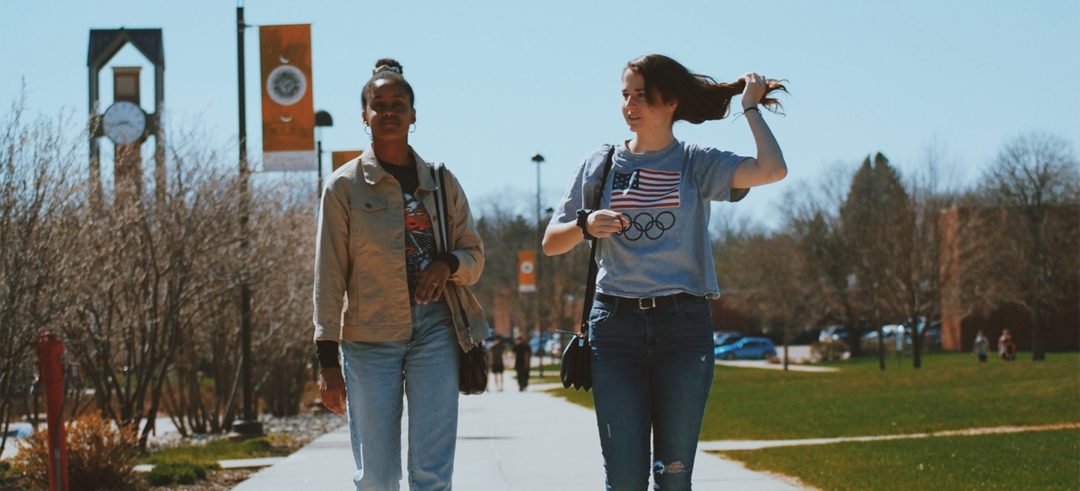Brand Higher Education Marketing and Advertising
How Influencer Marketing Works in Higher Education

By \ September 19, 2019
When you think of an influencer, what comes to mind?
A super smart techie reviewing the newest iPhone? A famous Beauty Blogger making a tutorial about how to apply a perfect cat-eye?
Well, how about alumni casually sharing all of their wonderful memories with prospective students?
The education industry isn’t the first thing that comes to mind when you hear the word “influencer” but influencer marketing is growing rapidly in higher education.
Students, alumni, and even faculty members all have their own followers on social media — sometimes into the TENS of thousands! — and tapping into this audience can be a great way to improve student recruitment, drive event attendance, and even increase alumni donations.
Often referred to as “ambassador” programs, influencer marketing efforts have been implemented at universities across the country. We dug up a few examples and show how they align with specific goals — take a look and see if any of them could work for your school.
Recruitment
We know that Gen Z (the upcoming class of college freshman) crave authenticity. 3/5 of them don’t trust what brands say, and eighty-five percent of Gen Z students say they never or only sometimes trust advertisements for a school. But on the flip side, Gen Z does trust their peers. When it comes to students, 84 percent said they would follow content from a YouTuber who attends the university they’re considering for insight into student life.
Since this generation will soon be enrolling in college, earning their trust is important. And it can be achieved through influencers. At Rollins College, for example, the marketing and communications department runs a Social Media Ambassador Program in which students partner with the school to regularly make social media posts about their student experience. At the University of Central Florida, the school partnered with student and YouTuber Sonali Prabhu to produce videos promoting her experience at the school. Some of her videos have generated over 20k views and a ton of positive comments about the school:
These ambassador programs can supplement your marketing material with more authentic and natural content. They can fill in the gap between the high-level marketing your school does (advertising, rankings, events) and the peer-to-peer connection that prospective students often lack in their school search.
Campus Engagement
When it comes to student engagement, Student Life can only do so much. If you’re looking for more attendance at sports games and campus events and higher membership in student clubs and groups, why not use your students to build a buzz?
At the University of Delaware, for example, student ambassadors are chosen based on their involvement in the campus, like how many events they go to and clubs they’re apart of. In exchange for their influence, ambassadors are paid in merchandise and swag, front row seats at campus events, and opportunities to interact with A-listers visiting the campus. These invitations, in turn, result in more social media posts promoting on-campus events.
Again, authenticity is the main ingredient in these ambassador programs. Universities can do an incredible job branding, organizing, and promoting events and clubs, but at the end of the day, they need to get students talking (or sharing) if they want a great turn out.
Donations & Alumni Engagement
In the same way student ambassadors can drive recruitment and campus participation, alumni ambassadors can drive donations and engagement.
In addition to its student ambassador program, the University of Central Florida also has an alumni ambassador program in which volunteer alumni use social media, email, phone calls or text messages to advocate on behalf of UCD Advancement and all its fundraising events. At the University of Virginia and Santa Clara University, alumni and professors contribute to thought leadership blogs which are used to spread awareness of the school’s research and academic achievements (which alumni can support through donations).
In all these cases, the content and social media posts created by alumni and professors is effective because it resonates with peer audiences. While Gen Z might have the strongest BS-detectors, alumni of all ages crave similar peer-to-peer communications. Influencers have no age restrictions.
Tying It All Together
The most important ingredient to a successful student, alumni, or faculty influencer program is making sure that students have a positive experience in the first place.
From the first time they come in contact with your school to the day they graduate, students need to have a strong relationship with your university if they’re ever going to promote the school to their followers.
Our recent whitepaper, Forget The Funnel, shows how universities can nurture prospective students, current students, and alumni over time. If nurtured correctly, your faculty, students, and alumni can become your biggest advocates/influencers.


